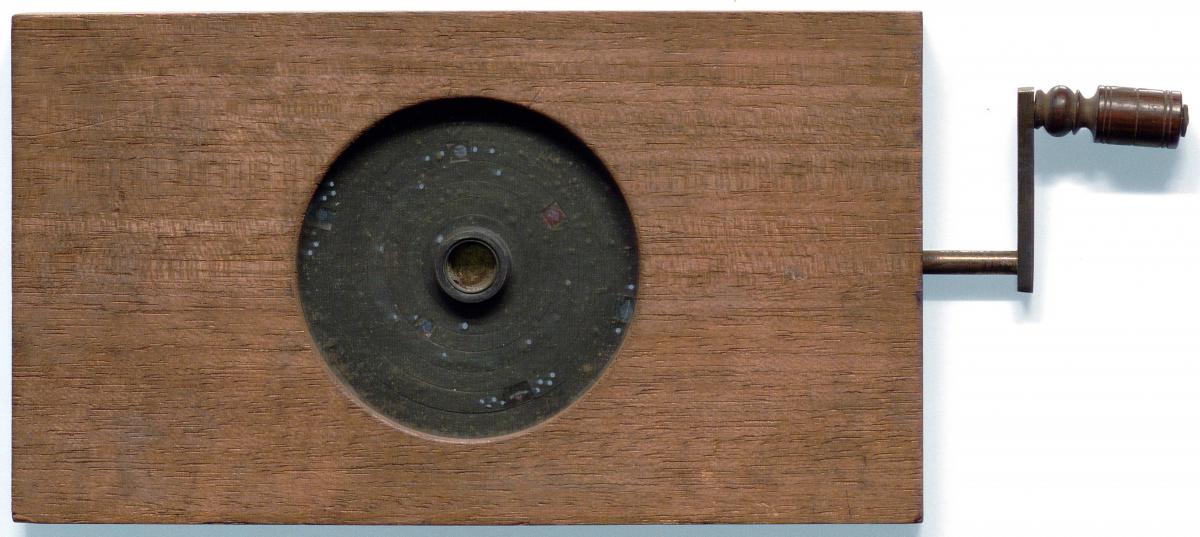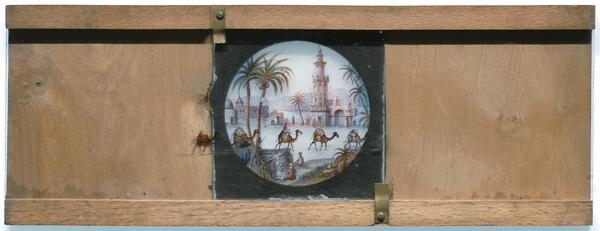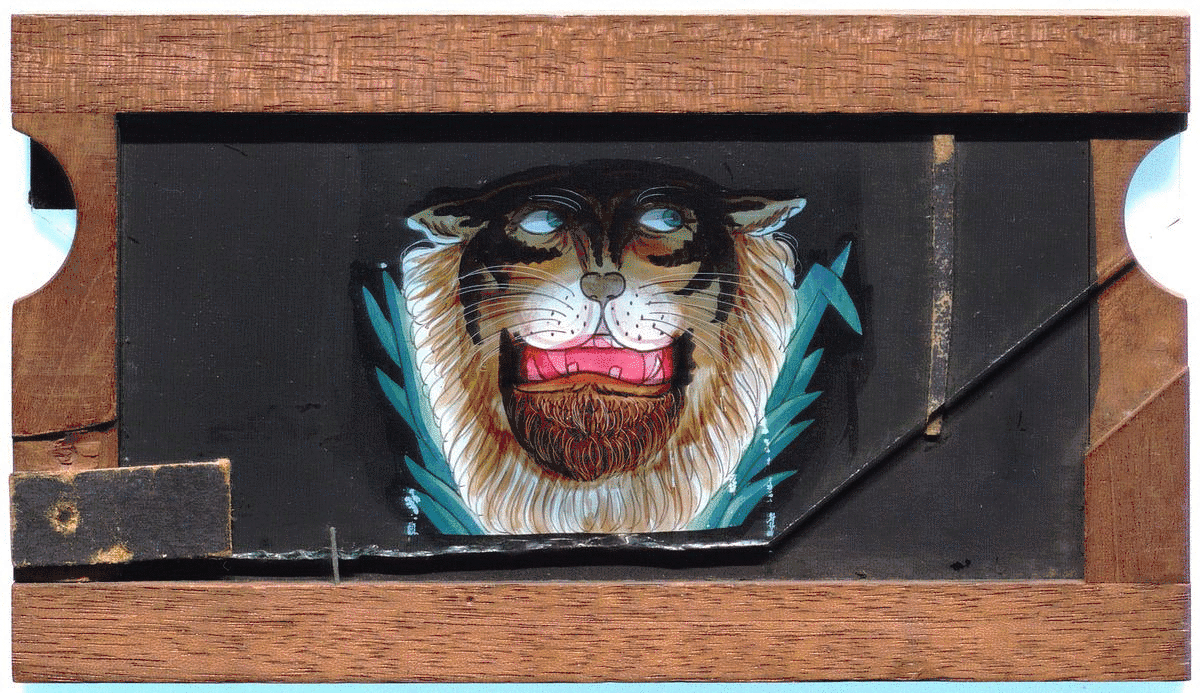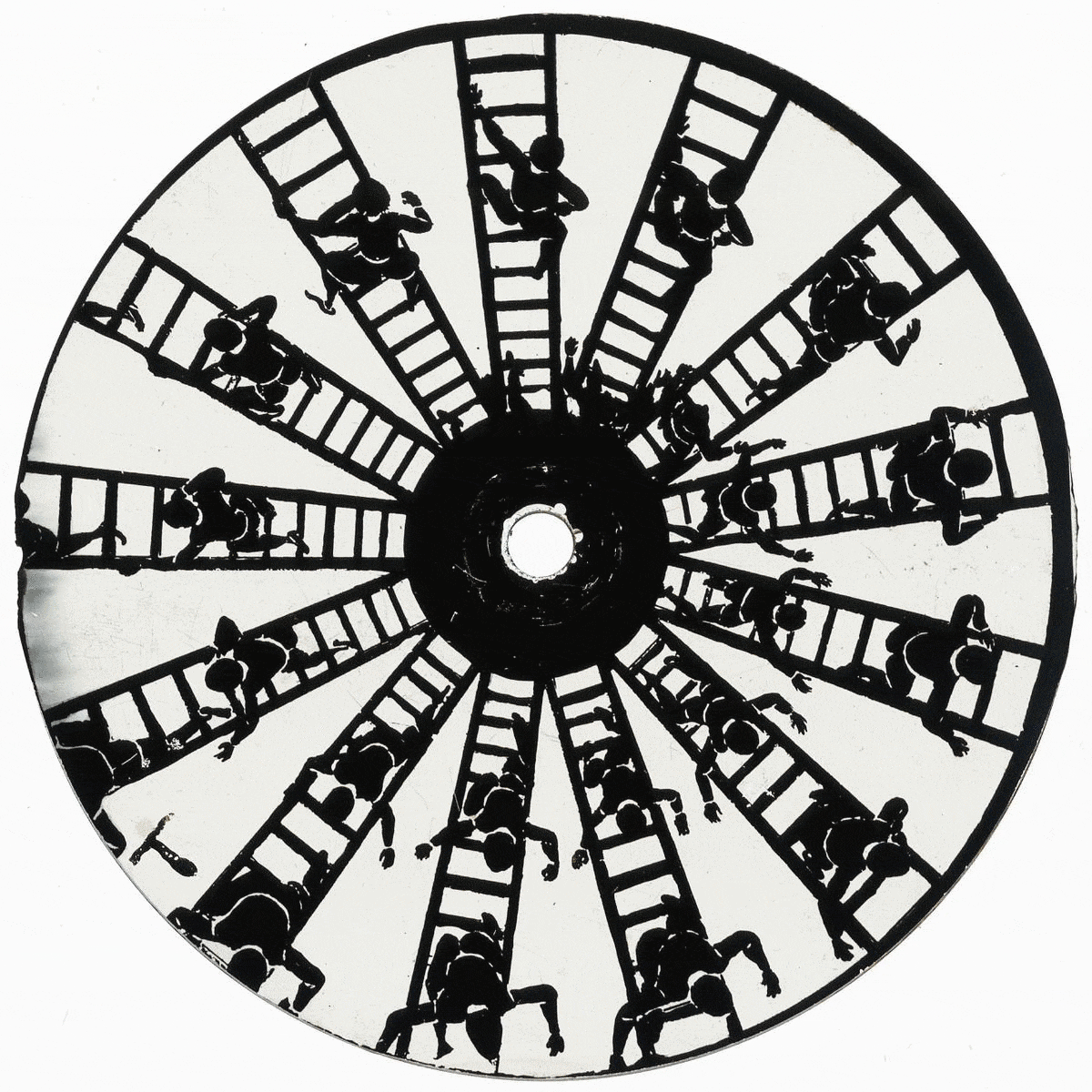The Hagley Library’s newest addition to our Digital Archive is a collection of stereoviews and lantern slides compiled by Alexis "Lex" du Pont (1928-2016), the son of Du Pont Motors founder E. Paul du Pont (1887-1950). Alexis "Lex" du Pont was also a collector and dealer of motorcycles, automobiles, and antique aircraft, and was the founder of New Garden Aviation and New Garden Flying Field in Pennsylvania.
The Alexis du Pont stereoviews and lantern slides (Accession 2016.303) collection was donated to the Library in 2013 but required significant conservation and restoration work before it could be made safe for scanning and use. You can read more about this process in a two part series from our Library Conservator, Laura Wahl, by clicking here and here.
The new digital collection represents a small part of the full collection, which includes albumen silver prints, cabinet cards, stereoviews, cartes-de-visite, lantern slides, and a lantern slide projector. Since lantern slides are more difficult to view in person without equipment, and since these glass items are often too fragile to circulate to the general public, we prioritized these items when deciding what material to include in the scanning project. Some of the most interesting items in the collection are the mechanical lantern slides, early forms of animated entertainment. These images would have been mounted to a magic lantern, an early type of projector that was developed in the 17th century and in popular use until it was superseded and replaced by slide projectors in the mid-20th century.
The collection’s one choreutoscope (below), like most of its kind, features a dancing skeleton motif. The choreutoscope worked via a hand-crank and synchronized guillotine shutter, which rotated a circular slide across a small viewing pane while the shutter closed the pane from view between images. The collection also includes one astronomical rackwork slide, which used a hand crank with a grooved pin to rotate a toothed iron disc with an array of small punched holes, some with small painted inserts of planets. The slide is intended to show the revolution of all the planets and their satellites round the sun. The crank must be turned 24 times to make a complete rotation.

The majority of the moving images, however, are glass phenakistiscopes, slip slides, and lever slides. The slip slides include slip panorama slides (seen below), in which the operator would slide a painted glass slide over a static image to convey movement, and slipping slides with masking, in which one or more painted glass plates would be slid back and forth across a stationary plate with black painted masking to hide and reveal portions of the image to suggest repetitive movements.

The lever slides in the collection worked by having an operator manipulate or more painted glass plates via levers across a stationary image to create the illusion of movement. Many of the lever slides in this collection are actually a combination of lever and slip mechanisms, like the slide seen below. Much of the lion’s face seen here is painted onto a stationary slide. The animal’s lower jaw is painted onto the lever-mounted pane seen on the front of the slide, allowing the lion’s mouth to move. The lion’s eyes, meanwhile, are painted on a second moving pane mounted behind the object, a slip slide that moves back and forth to allow the lion to look left and right.

Finally, the collection also includes a number of glass projection phenakistiscopes, an optical illusion entertainment consisting of a circular disc featuring a series of sequential images that, when rotated at sufficient speed, generates the illusion of fluid motion.
And, yes, we’re saving the best news for last. An absolutely delightful selection of animated video files accompanies these items to demonstrate them in use. The gif below shows one of the phenakistoscopes in motion; to view the rest, visit the collection’s page in our Digital Archive by clicking here.

Skylar Harris is the Digitization and Metadata Coordinator Audiovisual Collections & Digital Initiatives Department at Hagley Museum and Library.
